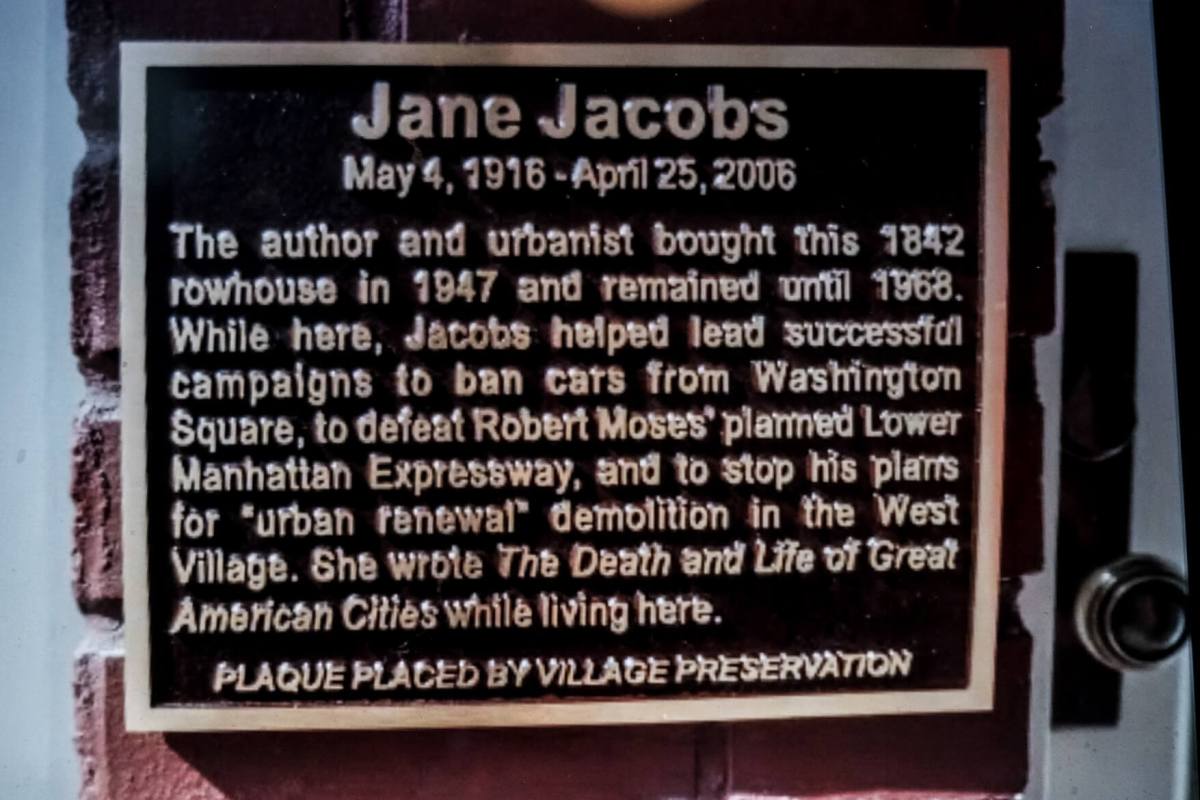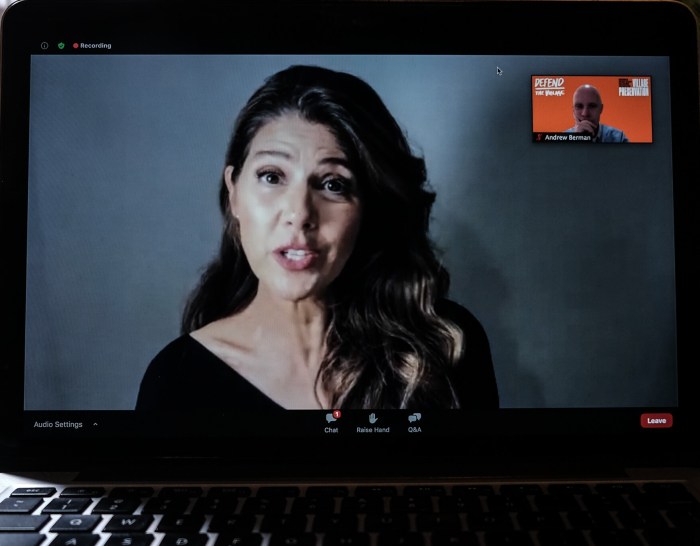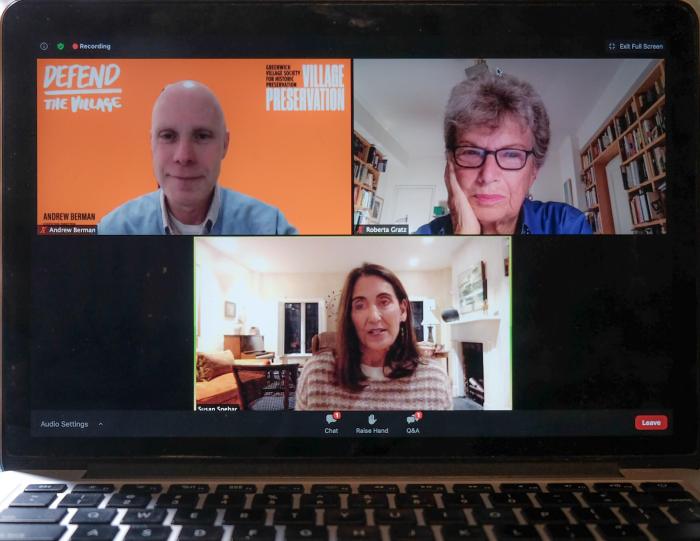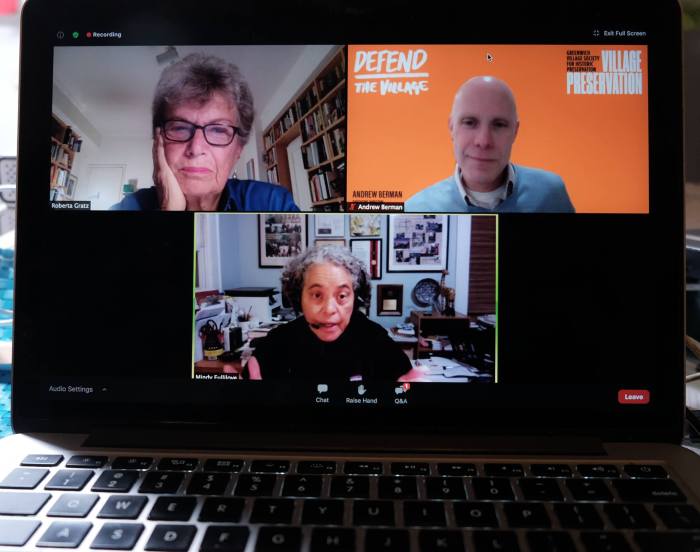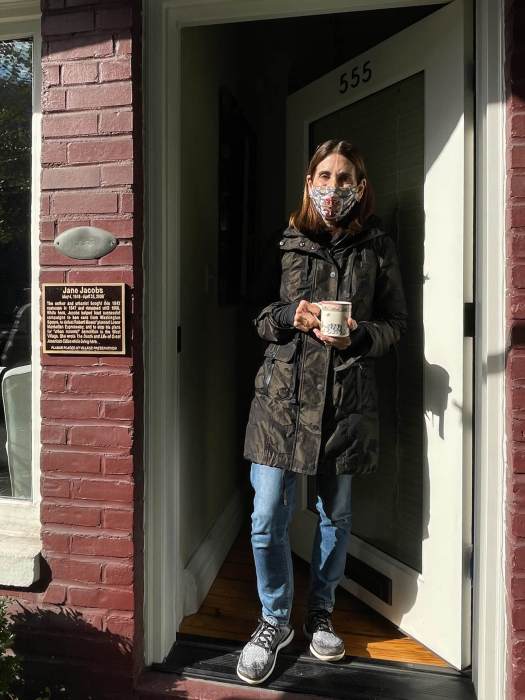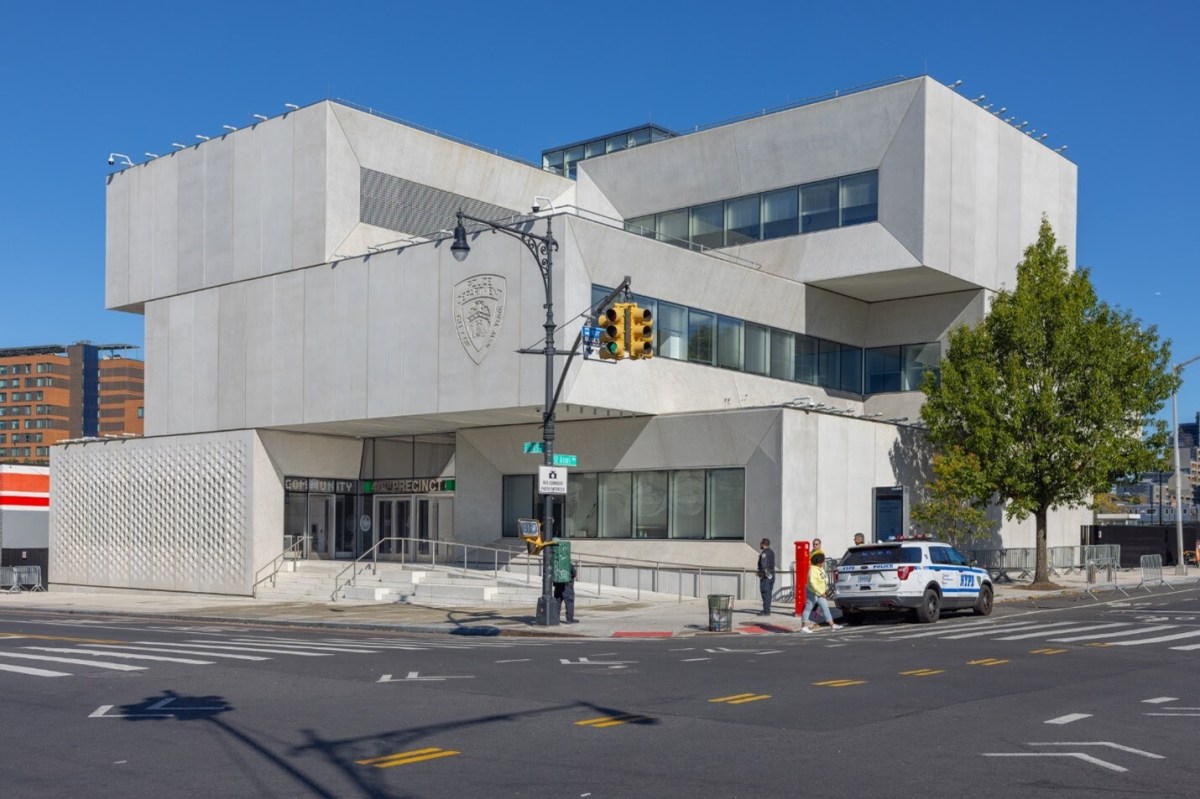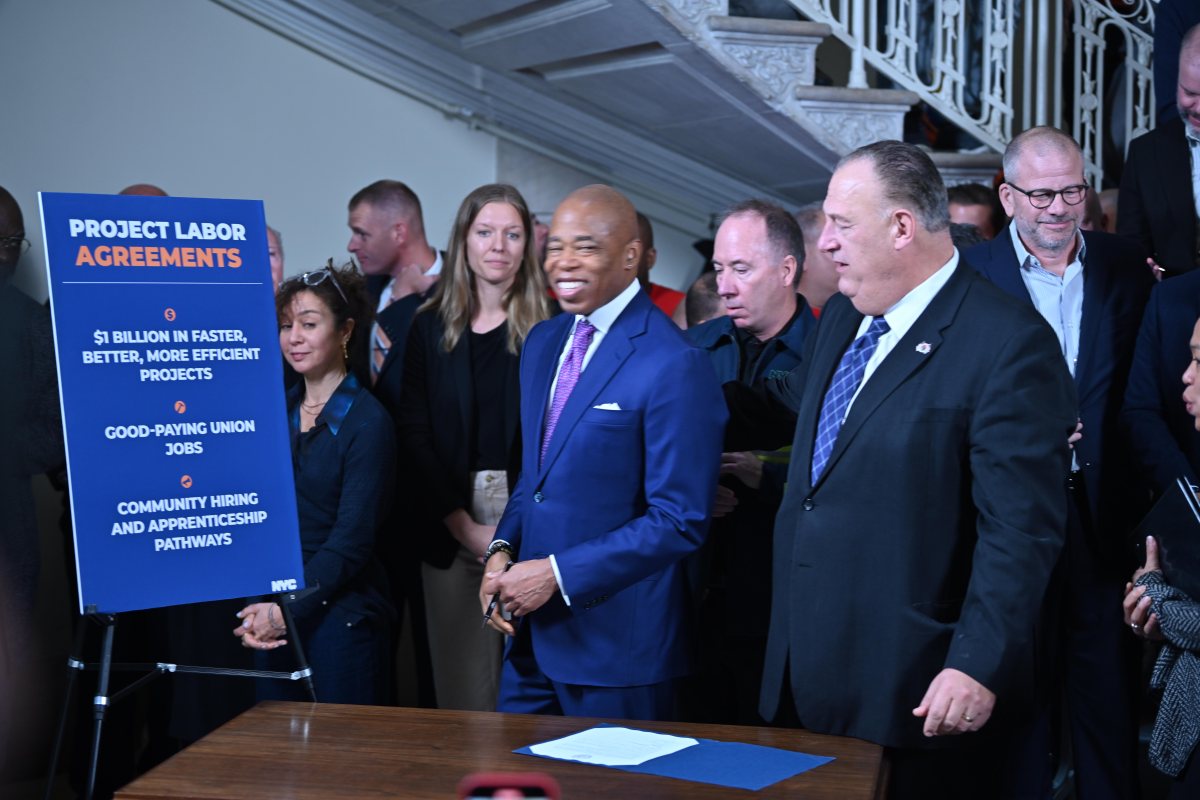By Tequila Minsky
Jane Jacobs is the patron deity of Greenwich Village.
For those of us living below 14th Street, we have Jacobs, her observations and thinking, her deep humanism, and fearless activism to thank for preserving the essence and vitality of our Lower Manhattan neighborhoods.
In 1961, she spells it all out in her book The Death and Life of American Cities: what makes cities safe or not, what constitutes a neighborhood, why some neighborhoods remain poor and others reconstitute themselves. She helps define what makes cities work.
Jacobs helped lead the campaign to get cars out of Washington Square. She helped defeat Robert Moses’ planned Lower Manhattan Expressway that would have destroyed Soho, Little Italy, the South Village, the Lower East Side and parts of Chinatown. She stopped plans for Urban Renewal in West Village when a dozen blocks would have been razed and replaced with towers.
Jacobs’ ideas were formulated while living in a Hudson Street row house in Greenwich Village.
In late October, Village Preservation held a virtual historic plaque unveiling outside of 555 Hudson Street to acknowledge and celebrate Jacobs. At this home, built in 1842, Jacobs lived for 21 years from 1947-1968, when she moved to Toronto.
Andrew Berman, Executive Director of Village Preservation, explained how Jacobs didn’t buy into the popular notions at that time of how cities work. She came up with how cities succeed with her modus operandi of observation, watching the “sidewalk ballet” on Hudson Street— people interacting with each other and their surroundings.
During the program’s introduction Berman emphasized, “She made us realize that sense of place is really important.” She believed that old buildings shouldn’t be tossed aside; there is value in their resilience, reuse, and connection to history and culture.
“She taught us that the experts don’t always have all the answers.” Jacobs understood that when it comes to urban development, local communities need to have a place at the decision-making table.
In the 2016 film “Citizen Jane,” actress Marissa Tomei is the voice of Jane Jacobs—reading her words in Matt Tyrhauer’s film. Tomei kicked off the formal part of the plaque dedication program.
“We’re still fighting to have a city with small independently owned shops where we know the owner,” Tomei says, “and historic neighborhoods… and where diversity is recognized and appreciated.”
Tomei spoke of being inspired by Jacobs and of the importance of getting involved “to make your neighborhood, city and country a better place.”
The actual building’s owner Susan Spehar has embraced the spirit of Jane Jacobs while living in 555 Hudson Street for 12 years. “I feel her in here,” Spehar channels, “hoping that some of her has rubbed off on me.”
Spehar spoke of looking through those very windows Jacobs looked through to see the street ballet: the weather, passersby, people in cafes, laughter, dog walkers, parking space arguments. “It makes me feel like a real New Yorker.”
“The history of this house will always belong to New York City,” says a very grateful Spehar.
Scholars, Dr. Mindy Thompson Fullilove, professor of urban policy and health at The New School and Roberta Gratz, longtime friend of Jacobs, journalist, and co-founder with Jane of the Center For the Living City contributed to the evening’s program, which can be seen in full on YouTube: https://youtu.be/ruc8IdqgWfI .
A short video of the installation and actual unveiling screened during the virtual dedication.
Village Preservation’s historic plaque program celebrates important people, events, and institutions connected to Greenwich Village, East Village and NoHo.
This dedication is the 16th such historical plaque, joining the home of painter Jean-Michel Basquiat, writers James Baldwin and Lorraine Hansberry, the Filmore East, and the Martha Graham Dance Studio, to name a few. For the full list and map of plaque locations: www.villagepreservation.org/campaign/historic-plaques .
This program was co-hosted by Center for the Living City, Jane’s Walk and the Historic Districts Council.



